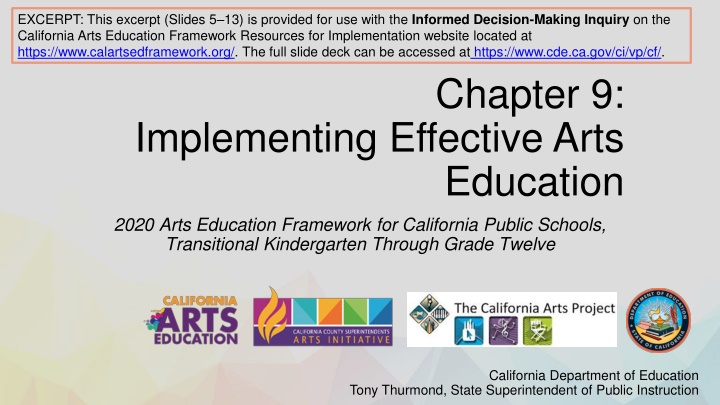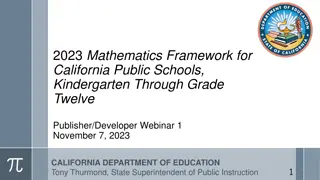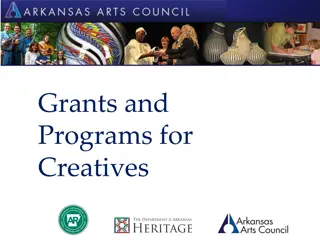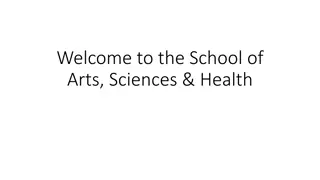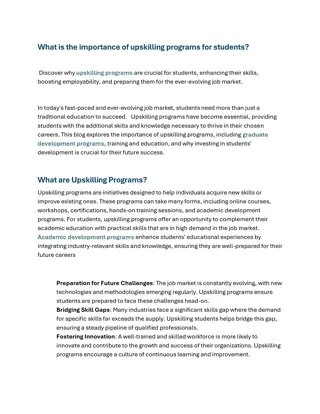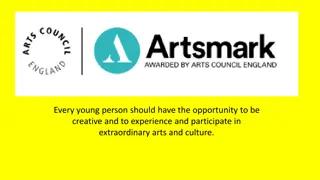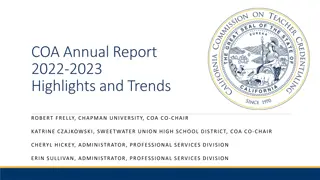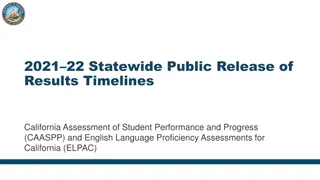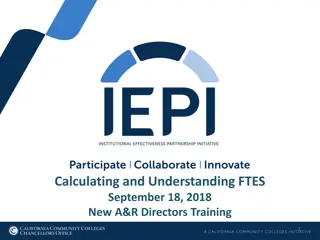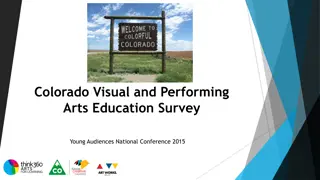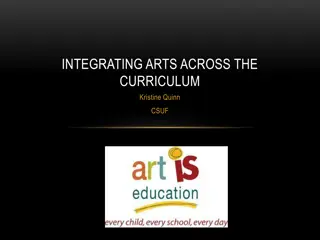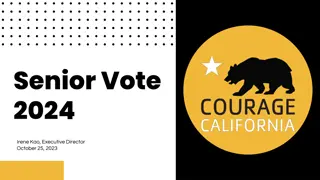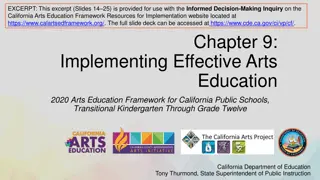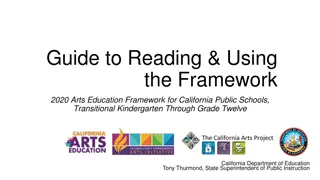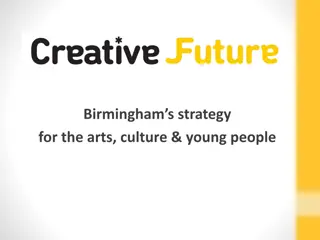California Arts Education Framework: Empowering Students Through Comprehensive Arts Programs
California's Arts Education Framework emphasizes the importance of providing effective and equitable arts education programs for all students. The framework highlights the significance of arts in developing the whole child, aligning with California's vision of preparing students to learn, work, and thrive. Equity in arts education is a key focus, ensuring that every student has the right to engage and succeed in high-quality arts learning. The framework provides guidance on implementing comprehensive arts programs from PreK to Grade 12, emphasizing the essential elements that contribute to a well-rounded arts education.
Download Presentation

Please find below an Image/Link to download the presentation.
The content on the website is provided AS IS for your information and personal use only. It may not be sold, licensed, or shared on other websites without obtaining consent from the author.If you encounter any issues during the download, it is possible that the publisher has removed the file from their server.
You are allowed to download the files provided on this website for personal or commercial use, subject to the condition that they are used lawfully. All files are the property of their respective owners.
The content on the website is provided AS IS for your information and personal use only. It may not be sold, licensed, or shared on other websites without obtaining consent from the author.
E N D
Presentation Transcript
EXCERPT: This excerpt (Slides 513) is provided for use with the Informed Decision-Making Inquiry on the California Arts Education Framework Resources for Implementation website located at https://www.calartsedframework.org/. The full slide deck can be accessed at https://www.cde.ca.gov/ci/vp/cf/. Chapter 9: Implementing Effective Arts Education 2020 Arts Education Framework for California Public Schools, Transitional Kindergarten Through Grade Twelve California Department of Education Tony Thurmond, State Superintendent of Public Instruction
Q1What are the elements of effective and equitable arts education programs? 2
Arts Education and the Whole Child The arts are a major area of human cognition, one of the ways in which we know about the world and express our knowledge. Much of what is said in the arts cannot be said in another way. To withhold artistic means of understanding is as much a malpractice as to withhold mathematics Since schools traditionally develop only linguistic and logical/mathematical skills, they are missing an enormous opportunity to develop the whole child. -Dr. Howard Gardner Harvard Graduate School of Education 3
Californias Vision Includes Arts Education for All Students California s arts education policies prepare students to learn, work, and thrive. The arts are required subjects in the California Education Code, sections 51210 and 51220; for high school graduation (one year of a visual or performing arts or world language or career technical education); and as one of the A G preparatory courses needed for admission to the California State University and to the University of California. 4
Equity in Arts Education CREATE CA defines EQUITY in Arts Education as the right of every student to engage and succeed in powerful, high quality, standards- based arts learning PreK 12. Declaration of the Rights of All Students to Equity in Arts Learning. CreateCA California s Statewide Arts Education Coalition 5
The Essentials of Comprehensive TK12 Arts Education Programs 6
A Note About Prekindergarten vs. Transitional Kindergarten The Arts Framework provides guidance for implementation of the prekindergarten (PK) Arts Standards which are intended for use in transitional kindergarten (TK). In the Arts Framework, the PK standards from the Arts Standards document are referred to as TK standards. PK educators should use the California Preschool Learning Foundations, Volume 2, which addresses the development of children 36 to 48 months. 7
A Comprehensive TK12 Arts Education ELEMENTARY SCHOOL Learning in elementary school builds a foundation for basic artistic literacy, creative thinking, exploration, and artistic processes needed for middle and high school. MIDDLE SCHOOL HIGH SCHOOL Studies in each arts discipline continue with specialization in one or more arts disciplines. Exploration remains critical as students increase and refine their artistic knowledge and skills. Instruction may be daily throughout the year, or through multiple, shorter courses. At the high school level, students continue in-depth study in one or more arts disciplines and preparation to study in an arts discipline after high school. Specialized opportunities for arts learning, through programs such as Advanced Placement, International Baccalaureate, and concentrated arts pathways, provide additional preparation for students seeking postsecondary arts learning or career entry 8
Steps to Ensure Equitable Access to Sequential Arts Learning 1. Establish well-articulated standards-based arts education districtwide and develop supportive feeder patterns between school levels. 2. Identify gaps and remove existing barriers to participation. 3. Take local context into account and identify an appropriate model or approach. 4. Revise existing programs and expand or add new arts education programs. 9
Elements of Successful Feeder Patterns TK12 Educators examine the standards to agree on a vision of what graduates should know and be able to do in the arts. District supports required staffing, provides equipment and supplies to champion the vision, and ensures coordination among schools. Principals and counselors communicate to ensure the prioritization of arts education within the master schedule and recruit students for programs. Teachers in each arts discipline engage in vertical communication to support standards-based expectations and feeder patterns. District/school communicates with parents about the value of arts education, the programs available to students, and the importance of sequential study. 10
